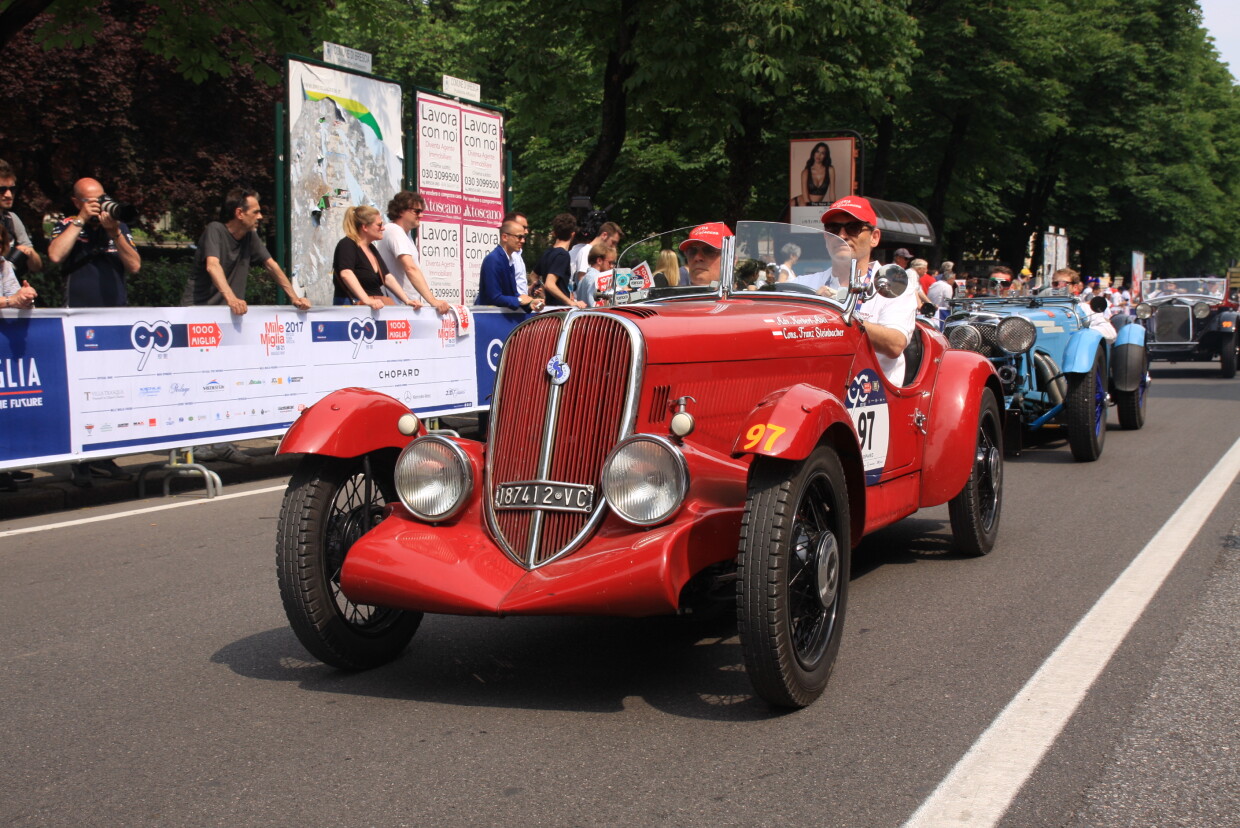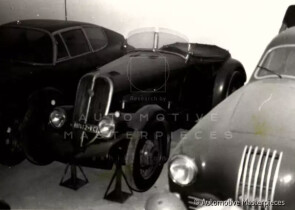
1933 Siata 508 Sport
ON/OFF
Why am I an Automotive Masterpiece?
L. Limited edition cars
no. 3 manufactured
Launched in 1932, the Fiat 508 Balilla quickly established itself as the car that put Italy on wheels. Developed under the technical direction of Tranquillo Zerbi, with contributions from Antonio Fessia and Dante Giacosa, the Balilla was designed to embody the regime’s ambition of creating an affordable national car. Its release aligned with the Fascist government’s push for modernization and industrial self-sufficiency, aiming to broaden access to mobility and reinforce national pride through Italian engineering. The car’s success stemmed from its low purchase price, modest operating costs, and ease of maintenance—key factors in a country still emerging from postwar economic hardship. Powered by a 995-cc inline four-cylinder side-valve engine producing around 20 hp, the Balilla offered adequate performance for its class. It featured a three-speed gearbox, rear-wheel drive, and a simple yet robust ladder-frame chassis with solid axles and leaf springs, prioritizing reliability and ease of repair. Compact, mechanically straightforward, and affordable, the Balilla became a cornerstone of Italian mass motorization. It was not only popular among private buyers, but also widely used in commercial and institutional roles—becoming a true icon of Fiat’s pre-war production and Italy’s automotive awakening.
The 508 S Balilla Sport, a competition version, was inspired by an original design by Carrozzeria Ghia. The first examples were built on the Fiat 508 Spyder chassis, suitably modified as “tipo corsa” (i.e. racing type), and still bore chassis numbers without the letter "S". In 1933, Fiat officially introduced the sporting version 508 S Balilla Sport, characterized by a lighter, elegant, and attractive body, which soon became a dream car for the younger generation. Fiat acquired the design rights from Ghia and produced two versions: the standard version, known as “Coppa d’Oro”, featured fully enclosed fenders, while the “Mille Miglia” version used lighter cycle fenders and a more lightweight chassis. The engine was also uprated from the standard 36 hp to 43 hp. The Coppa d’Oro version won the Coppa d’Oro del Littorio, from which it took its nickname, while the Mille Miglia version won the 1933 Mille Miglia in the up to 1100 cc Utility Class. Clothed in stylish open two-seater bodywork with a distinctive finned tail, the early "Spider Sport" models retained the crash gearbox of the standard cars but featured a special carburetor. Combined with a raised compression ratio of 7:1, this allowed for a maximum output of 30 hp at 4,000 rpm. In 1934, the second series 508 CS was introduced, improving on this successful formula. It adopted a four-speed synchromesh gearbox and an overhead-valve engine producing 46 hp. The final drive ratio was also modified, allowing for a top speed of 110 km/h. At the time, Siata was already producing accessories and performance parts for the Balilla, making it arguably one of the earliest car tuning companies in automotive history.
This Coppa d'Oro, chassis No. 508*037255 is different from the others for a custom aerodynamic nose with a rounded and beveled grille, aerodynamic appendages at the bottom in the form of aileron which include the rear fairing of the two headlights. Mechanically, it have a custom head produced by SIATA, a company that at the time built accessories and uprated parts for cars, making the Coppa d’Oro probably one of the earliest car tuned. Only three examples are known, such as the one present here. This car is believed to have had a sporting past, but there is only evidence of two "late" events: the 1st Nastro Azzurro del Tigullio, organized by the Registro Fiat Italiano in Rapallo on March 31, 1963, and the Rievocazione Storica della Mille Miglia, held in April 1970. To notice that this car belonged to the famous Lancia’s test driver Claudio Maglioli, creator of the “Lancia Fulvia F&M Special Barchetta”, a prototype racing car, and co-worker for the creation of the mythical Stratos.





